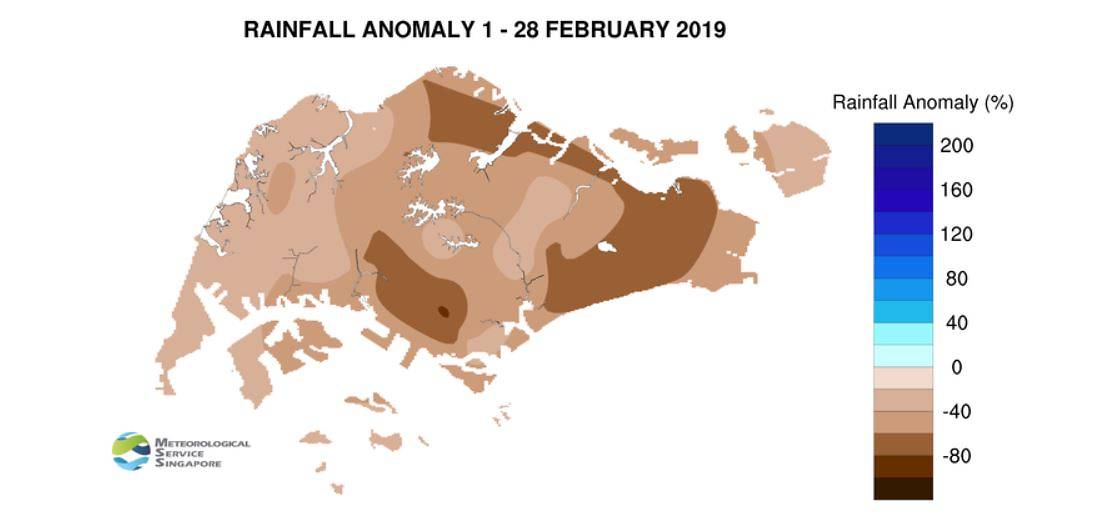SINGAPORE: This February was the third hottest Singapore has seen in 90 years, but the next two weeks may get even warmer, said the Meteorological Service Singapore on Friday (Mar 1).
While February has traditionally been the driest month in the year, other factors contributed to the heat last month.
Singapore is currently in the dry phase of the northeast monsoon, when prevailing winds bring in air that does not generate as much rain compared to December and January, said one expert.
“The relative lack of clouds during this period tends to result in more direct sunlight reaching the surface, so it feels ‘hotter’,” said Assistant Professor Winston Chow from the National University of Singapore’s Geography Department.
He added that this is normal at this time of the year.
Some leaves on plants in a park have turned brown after a dry February 2019. (Photo: Chew Hui Min)
The Met Service said that the mean monthly temperature last month was 28.2 degree Celsius, 1.1 degree Celsius warmer than the long-term average for February. It was also the third warmest February since temperature records began in 1929.
READ: Hotter days expected in first half of March after third warmest February in 90 years
Two other phenomena are contributing to the hot and dry weather recently, weather scientist Koh Tieh-Yong told Channel NewsAsia.
There has been a weak El Nino condition since last October which has reduced the moisture for rainfall in this region.
“This is a climate anomaly that happens every few years … and makes our northeast monsoon drier in the first three months of 2019,” said Associate Professor Koh from the Singapore University of Social Sciences.

Over the last two weeks, there has been what the Met Service called a “dry and stable air mass” over the region. According to Friday’s forecast, it is here to stay for two more weeks.
Prof Koh said that this is because an intra-seasonal disturbance, called the Madden-Julian Oscillation, has entered the dry phase in Southeast Asia. As a result, there has been a relative lack of deep clouds in the region.
“(The) descending dry air further discourages cloud and rain formation,” he explained.
“When there are less clouds, the equatorial sun efficiently heats up the land surface. Accompanied by the dearth in rainfall, not much cooling by the evaporation of water can occur, thereby exacerbating the hot weather.”
READ: Second Johor hotspot detected; fires could bring ‘some smell and haze’ to Singapore: NEA
The conditions above have also contributed to hotter weather in Malaysia earlier in the week, when MetMalaysia issued Level 1 alerts to look out for heat waves in the northern states of the peninsula, Prof Koh added.
The hot and dry weather has also caused fires to break out, such as in southeast Johor on Feb 25 and 26.
The particulate matter from the fires, diffused by the monsoon winds, caused mild hazy conditions in some parts of Singapore.




